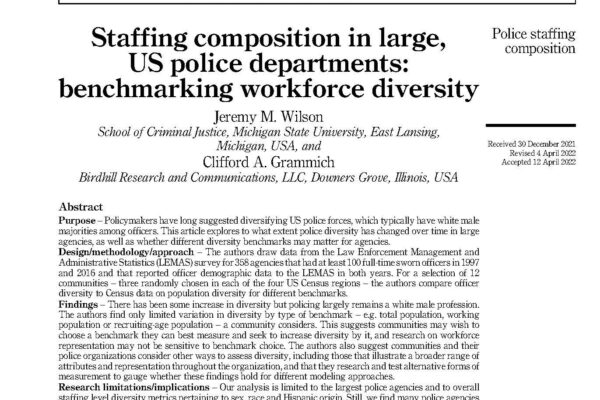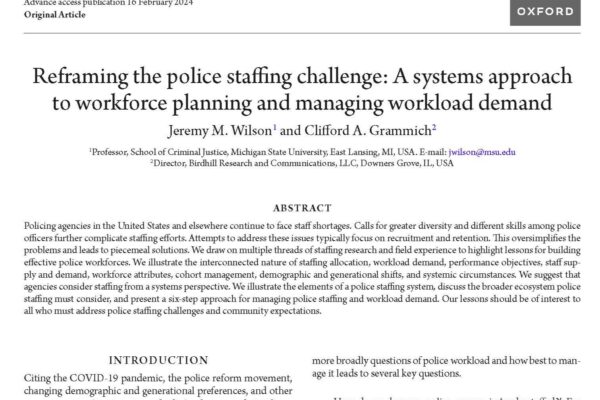The utility of police consolidation, and in particular police contracting of services, has received widespread attention in academic and practitioner circles. However, the bulk of empirical research centers on potential fiduciary benefits; only limited scholarship has explored the possibility that changes in police services may correspond with differences in crimes solved and offenses observed. To address this gap, we examine consolidation in police services in a historically high crime, disadvantaged urban setting (Compton, California), which began contracting with the Los Angeles County Sheriff’s Department (LACSD) after the closure of Compton Police Department in 2000.
The Effects of Police Contracting on Crime: An Examination of Compton, California. Journal of Experimental Criminology, Vol. 14 (1): 59-81, 2018.
Featured Research

A Performance-Based Approach to Police Staffing and Allocation
U.S. Department of Justice, Office of Community Oriented Policing Services

Brand Protection and the Global Risk of Product Counterfeits: A Total Business Solution Approach
Edward Elgar Publishing
***WINNER OF THE AMERICAN SOCIETY OF CRIMINOLOGY DIVISION ON WHITE-COLLAR AND CORPORATE CRIME OUTSTANDING BOOK AWARD***

Staffing Composition in Large, US Police Departments: Benchmarking Workforce Diversity
Policing: An International Journal

Reframing the Police Staffing Challenge: A Systems Approach to Workforce Planning and Managing Workload Demand
Policing: A Journal of Police and Practice

Police Recruitment and Selection: Resources And Lessons for Workforce Building
U.S. Department of Justice, Office of Community Oriented Policing Services

